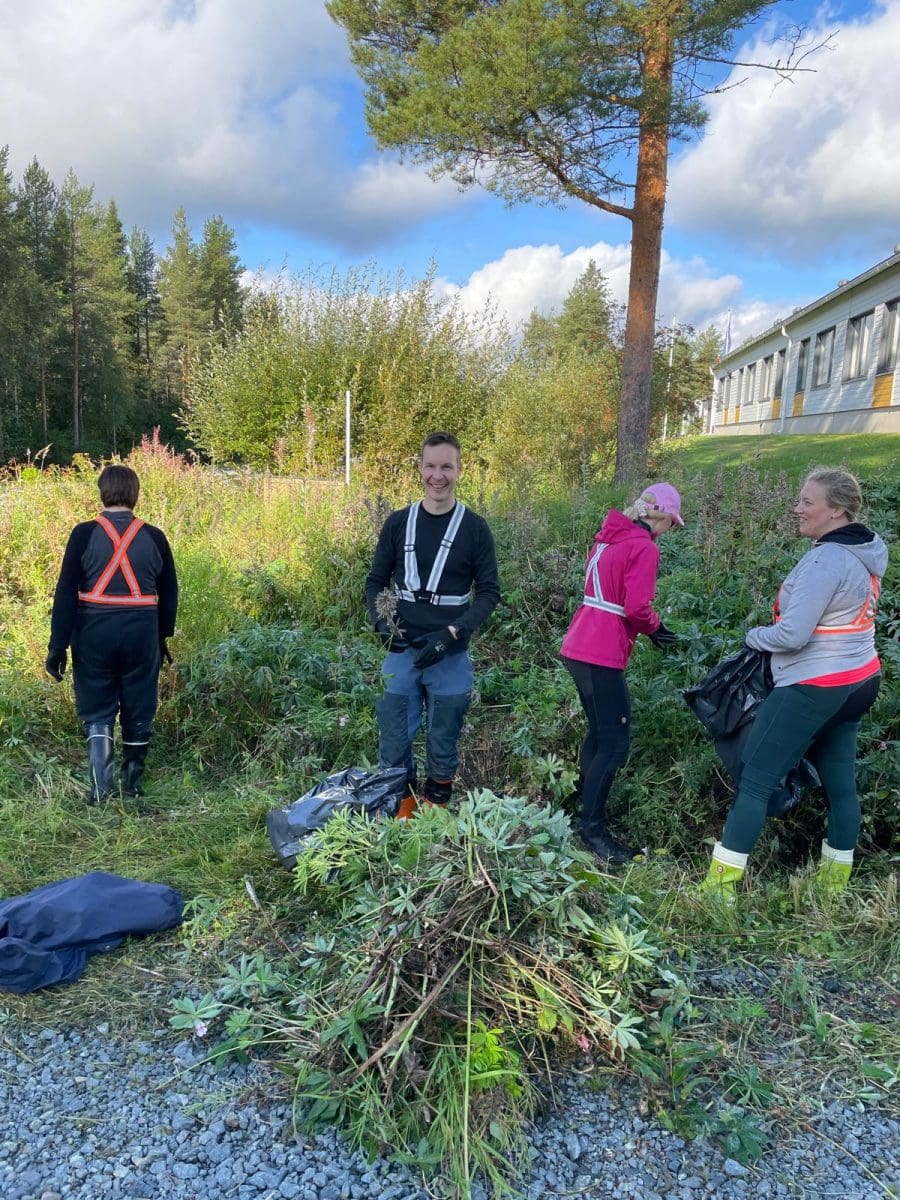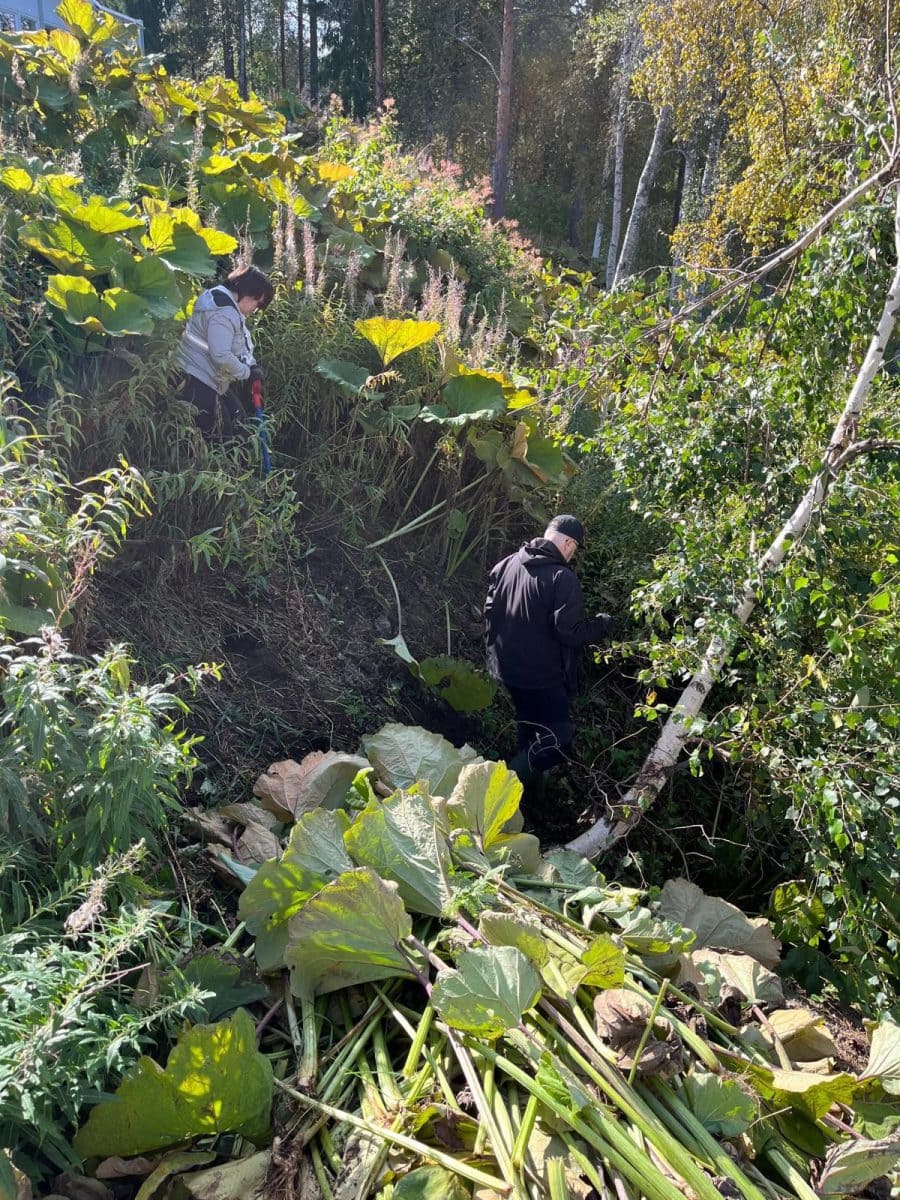
The issue of invasive alien species has also been recognised by many nature tourism companies. One such example is Hawkhill – a tourism company that has tackled invasive species as part of its sustainability work and challenged others to get involved as well. Invasive species control work has also been gamified.
In the summer of 2024, Pohjola OP wanted to gain an understanding of the issue and take action to combat it. Experts from the local association of Rural Women’s Advisory Organization in Oulu helped with the planning of practical measures. They mapped locations of invasive alien species that were suitable for communal work in the desired areas and were in contact with landowners. They also drew up very detailed instructions for staff members and taught them about invasive species control work. Once the sites had been prepared and everyone had read the instructions beforehand, it was easy to start working.
Inspired by communal nature work
The joint control work was dubbed the Communal nature work campaign. There were seven sites ranging from Oulu to Ivalo and ten volunteer gatherings. Almost 150 staff members took part in the eradication work. According to Anu Huhanantti, contact person for the campaign, a large number of staff members from all over got excited about the work, and many of those who didn’t participate in the actual events still learned about control work.
The volunteers helped eradicate garden lupin, Himalayan balsam, rugosa rose, butterbur and false spiraea. In Rovaniemi, 30 sacks of invasive plants were collected, whereas in Tornio they needed a whole container. The area tackled by the volunteers was almost 1,900m2 . The work was carried out on sites owned by cities and municipalities, and landowners were responsible for the proper disposal of the plant waste.
Environmental expert Taru Koskinen from the local association of Rural Women’s Advisory Organization in Oulu was impressed by how much was achieved in the end: “Enthusiasm for eradication work among the volunteers grew alongside the piles of waste”. Koskinen has also received positive feedback from the landowners. Municipal representatives who visited the sites were positively surprised by the results.

“What a wonderful idea these events are <3”
Feedback was also collected from the volunteers. The events were seen as rewarding, since they were able to spend time together and get some exercise. The hands-on work was a refreshing change from a normal working day and reinforced the feeling that you can actually do something good for nature. “Sweat pouring, we dug our nine shovels into the ground. There was a sense of shared joy when someone managed to uproot a plant,” one feedback read. Many hoped that the communal activities would continue in the years to come. They wanted to see the results of their own work over a longer period of time, carry out control work on the same sites and see how the area gets freed from the grips of invasive alien species.

Check out Pohjola OP’s Facebook page for more vibes and videos from the communal events.
Photos: Pohjola OP, volunteers and Taru Koskinen
Text: Leena Lahdenvesi-Korhonen
